Carthage Jail, Carthage, Illinois
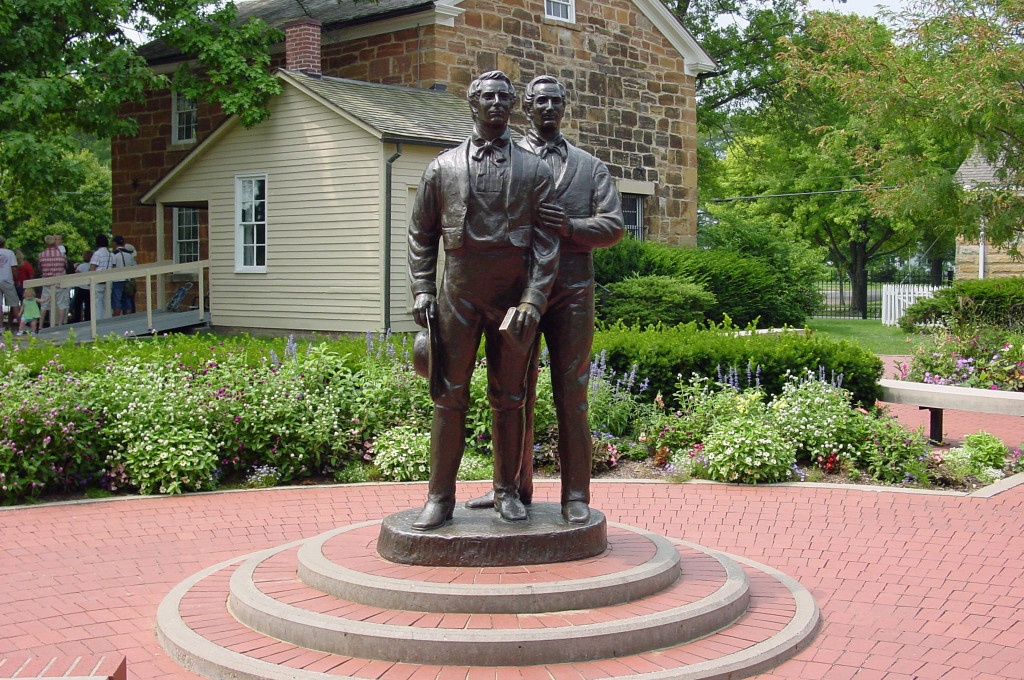
Carthage Jail was the location of the martyrdom of the Prophet Joseph Smith and his brother Hyrum on June 27, 1844.
Several events led up to the martyrdom. On June 7, 1844, the first issue of the Nauvoo Expositor was published in Nauvoo with Sylvester Emmons as the publisher. The newspaper spoke out against Joseph Smith and the leaders of the Church. Thus, a meeting of the city council was called to discuss the printing of the Expositor. The decision was made by the city council to “destroy it without delay” due to it being a “nuisance.”1
The city marshall was sent and “removed the press, type, printed paper, and fixtures into the street, and destroyed them… because of the libelous and slanderous character of the paper, its avowed intention being to destroy the municipality and drive the Saints from the city.”2
Subsequently, Joseph, Hyrum, and the other leaders were arrested because of the destruction of the Nauvoo Expositor press. Governor Thomas Ford promised them his full protection if they surrendered and went to Carthage for trial. On their way to Carthage Joseph prophetically remarked, “I am going like a lamb to the slaughter; but I am calm as a summer’s morning; I have a conscience void of offense towards God, and towards all men.”3
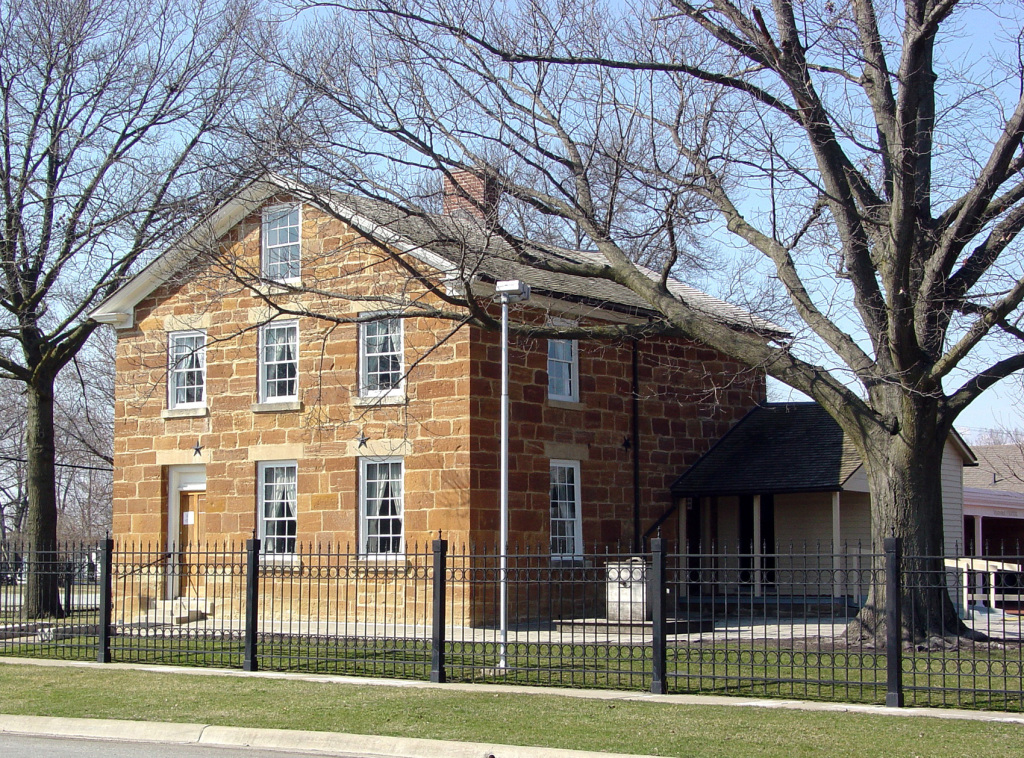
After arriving in Carthage, all of those arrested were released on bail, except Joseph and Hyrum. They were charged with treason and subsequently placed in Carthage Jail.4 Willard Richards and Elder John Taylor, who were with the Prophet and Hyrum when they were killed, stayed at the jail of their own accord.
On the morning of June 27, Governor Ford left and traveled to Nauvoo. That afternoon, the Prophet asked John Taylor to sing “A Poor Wayfaring Man of Grief,” his favorite hymn. Shortly after 5:00 p.m., a mob of 150-200 men converged on the jail. The mob rushed upstairs and Hyrum was hit in the face with a ball. He was then hit in the back from a ball coming through the east window and cried out, “I am a dead man.”5
|
John Taylor, while moving to the window, was then hit in the leg. He then sustained a ball to his chest, but his pocket watch prevented the ball from penetrating, saving his life. Nevertheless, John Taylor was shot three more times.
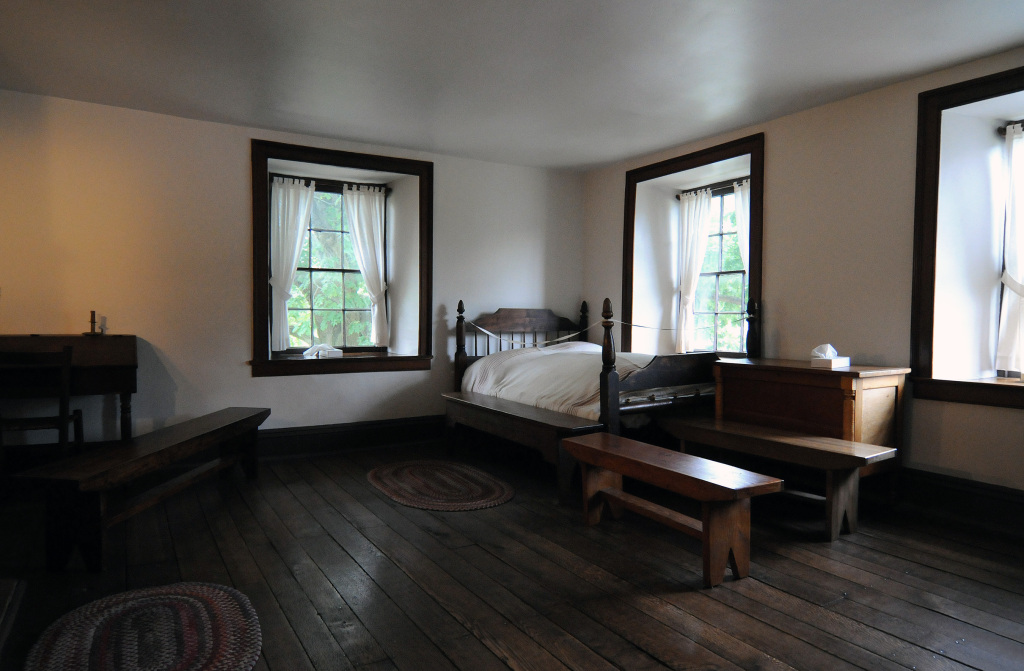
Joseph then moved to the window and was hit with two balls in the back and one from outside in the chest. He then exclaimed, “Oh Lord, My God!” and fell out the window, 25 feet down.6 Joseph and Hyrum, like many prophets of old, sealed their testimonies with their blood.
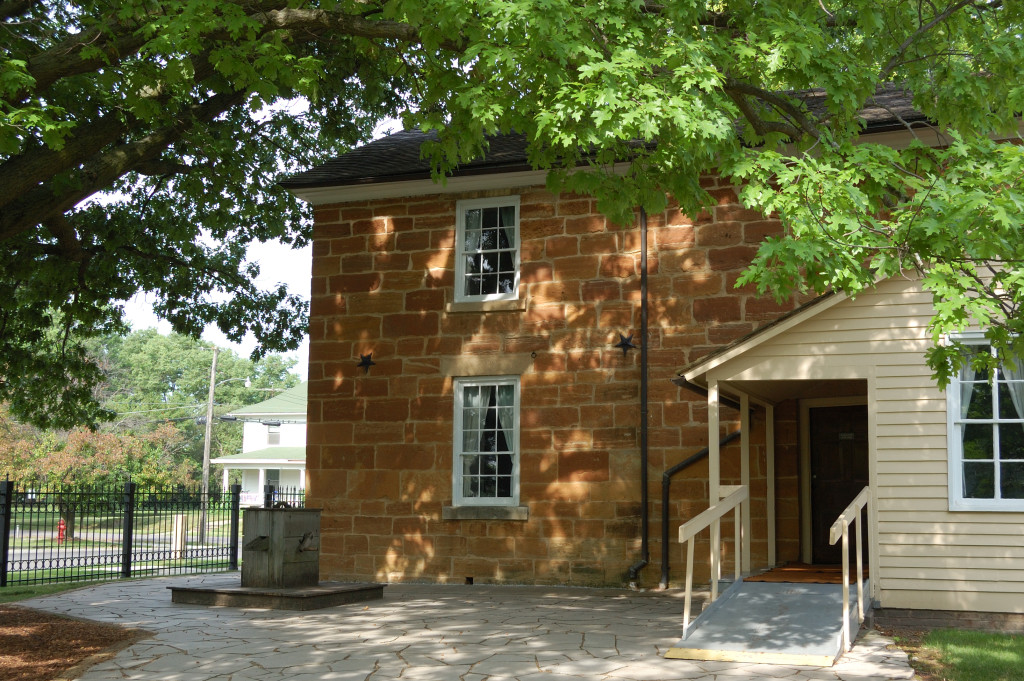
Willard Richards remarkably escaped with only a grazed ear. He dragged John Taylor to the cell room and covered him in straw and with a dirty mattress in order to hide him. Remarkably, John Taylor survived and later became the third President of the Church. Unfortunately, the murders of the Prophet and the Patriarch were acquitted.
The Church of Jesus Christ of Latter-day Saints purchased Carthage Jail, under the direction of Hyrum’s son, Joseph F. Smith, on November 3, 1903 for $4,000.7 It was the first historic site purchased by the Church.8
SOURCES
1 Joseph Smith, History of The Church of Jesus Christ of Latter-day Saints, 7 vols., introduction and notes by B. H. Roberts (Salt Lake City: The Church of Jesus Christ of Latter-day Saints, 1932-1951), 6: 432.
2 Ibid, 6:432-433.
3 Doctrine & Covenants 135:4.
4 Francis M. Gibbons, Dynamic Disciples, Prophets of God: Life Stories of the Presidents of The Church of Jesus Christ of Latter-day Saints (Salt Lake City: Deseret Book Co., 1996), 65 – 66.
5 Reed Blake, 24 Hours to Martyrdom (Salt Lake City: Bookcraft, 1973), 128.
6 Ibid, 130.
7 B. H. Roberts, A Comprehensive History of The Church of Jesus Christ of Latter-day Saints, 6 vols. (Salt Lake City: Deseret News Press, 1930), 6: 426.
8 Ibid.
Map & Directions
Admission: Free
Ownership Status
The Carthage Jail is a Church Historic Site, owned and operated by The Church of Jesus Christ of Latter-day Saints. Visitors are welcome. The jail is staffed and hosted by missionary volunteers who serve seven days a week between the hours of 9:00 a.m and 7:00 p.m. Monday through Saturday, and 12:30 p.m. to 5:00 p.m. on Sunday. Admission is free.
Photos
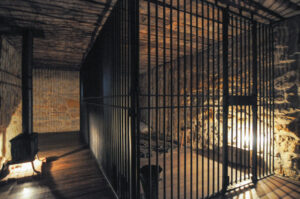

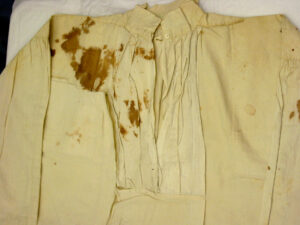
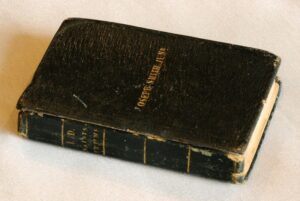
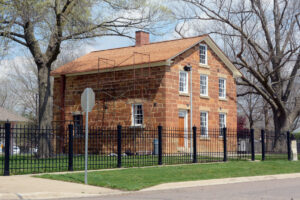
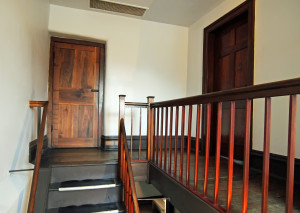
Articles & Resources
Carthage Jail
Willard Richards’ Account of the Martyrdom of Joseph and Hyrum Smith
Author(s): Willard Richards
Type: First-person account
Source(s): Contributor, Volume 8, No. 11, (September 1887), 440.
A shower of musket balls was thrown up the stairway against the door of the prison in the second storey, followed by many rapid foot-steps….
John Taylor’s Account of the Martyrdom of Joseph and Hyrum Smith
Author(s): John Taylor
Type: First-person account
Source(s): Dean C. Jessee, “The John Taylor Nauvoo Journal: January 1845-September 1845” (1983), BYU Studies, Vol. 23, Summer 1983, 4.
“I made a spring for the window which was right in front of the jail door. As I reached the window and was on the point of leaping out I was struck by a ball from the door about midway of my thigh which struck the bone. I think some prominent….”
Carthage Jail, at LDS.org
Carthage Jail, at JosephSmith.net
Carthage Jail, at Doctrine & Covenants Revelvation Sites Website
L. L. Baker, “On to Carthage to Die,” Improvement Era, 1969.
Reed H. Blake, 24 Hours to Martyrdom, 1973.
Reed H. Blake, “Martyrdom at Carthage,” Ensign, June 1994, 30.
Ensign, June 1994, 30.
Brian Q. Cannon, “John C. Calhoun, Jr., Meets the Prophet Joseph Smith Shortly before the Departure for Carthage,”  BYU Studies, 1993.
BYU Studies, 1993.
H.R. Driggs, “Visits to Carthage,” Juvenile Instructor, 1911.
Donald L. Enders, “Carthage Jail,” Encyclopedia of Mormonism, ed. Daniel H. Ludlow et al., 1992.
Kenneth W. Godfrey, “The Road to Carthage Led West,”  BYU Studies, 1968.
BYU Studies, 1968.
Gordon B. Hinckley, “Joseph, the Seer,” Ensign, September 1994, 68.
Ensign, September 1994, 68.
Joseph A. McRae and Eunice McRae, “Carthage Jail: A Physical Description of an Historical Structure,” Improvement Era, 1942.
Dallin H. Oaks and M.S. Hill, Carthage Conspiracy: The Trial of the Accused Assassins of Joseph Smith, 1975.
Jan Shipps , “A Little Known Account of the Murders of Joseph and Hyrum Smith,”  BYU Studies, 1974.
BYU Studies, 1974.
